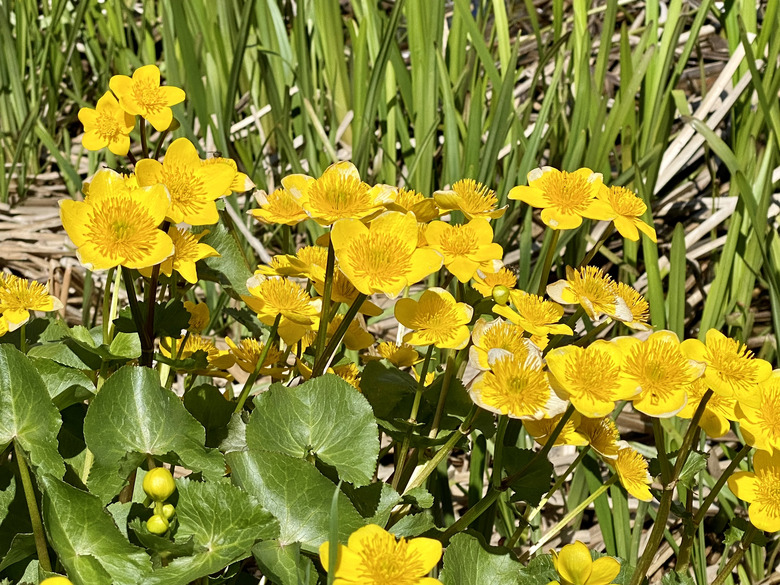How To Kill Buttercup Weeds
We may receive a commission on purchases made from links.
Buttercup weeds (Ranunculus repens) form a creeping mat of dense foliage that can quickly overtake the lawn or a garden bed. These perennial plants, which grow in U.S. Department of Agriculture plant hardiness zones 4 through 9, bear dark green, three-segment, toothed leaves and produce yellow flowers. Buttercup weeds spread through both roots and seeds. Manual removal is necessary in planted garden beds, but you can use chemical herbicides to kill the weeds in lawns or unplanted beds.
How to Remove Buttercup Weeds Manually
1. Loosen the Soil
Break up the soil around the base of the weed with a trowel or handheld garden fork, working carefully so you don't break the roots or stems. Wear gloves when pulling buttercup weeds because the sap is toxic and can cause skin irritation.
2. Pull the Weeds
Grasp the weed by its base and pull it out of the loosened soil. Sift through the soil and remove any root pieces that broke off, otherwise these will grow into new plants. Dispose of or destroy pulled weeds; don't compost them or they may spread back into your garden or lawn.
3. Continue Working the Soil
Break up exposed soil with a hoe, such as in a garden bed, once or twice weekly so the weeds don't reestablish in the bare area. Pull up any new weeds as soon as they sprout.
4. Watch for New Buttercup Weeds
Inspect lawn areas for reemergence of buttercup weeds every two or three days, and pull young weeds immediately so they don't set seeds or send out long roots. Buttercup seeds remain viable for 20 years, but regular inspection and removal can prevent them from reestablishing in the yard.
How to Remove Buttercup Weeds Chemically
1. Protect Yourself From Herbicide
Put on heavy waterproof gloves, cover exposed skin and wear eye protection before mixing and applying chemical herbicides. Broadleaf herbicides work best when applied in spring or fall, when the buttercups are actively growing and temperatures are between 75 and and 85 degrees Fahrenheit. Choose a calm day to prevent the herbicide from spreading with the wind.
2. Prepare Broadleaf Herbicide
Combine a broadleaf herbicide containing 2, 4-D or MCPP with water in a pump sprayer. Refer to the herbicide label for exact mixing instructions as these may vary among brands. Mix the herbicide thoroughly with the water and pump the sprayer to build pressure.
3. Spray on Affected Area
Spray the mixture over the affected lawn, coating the buttercup weeds thoroughly so the mixture wets the foliage. Apply 1 gallon of the solution every 250 square feet. If your lawn is St. Augustine grass (Stenotaphrum secundatum), which grows in USDA zones 8 through 10, or centipedegrass (Eremochloa ophiuroides), hardy in USDA zones 7 through 9, apply 1 gallon every 500 square feet.
4. Reapply the Herbicide
Reapply the herbicide two to four weeks later to destroy any new buttercup plants that come up or mature plants that recover from the first application.
5. Use Herbicide Safely
Keep all herbicides out of the reach of children and pets. Keep children and pets off the lawn following application until after the pesticide has settled and completely dried.
6. Improve Lawn Health
Keep your lawn as healthy as possible to prevent future growth. Buttercups are less likely to establish in healthy, lush lawns that aren't suffering drought stress or other cultural problems. There are over 20 species of buttercupweeds (Ranunculus spp.) in just the Midwest, with many having invasive tendencies.
